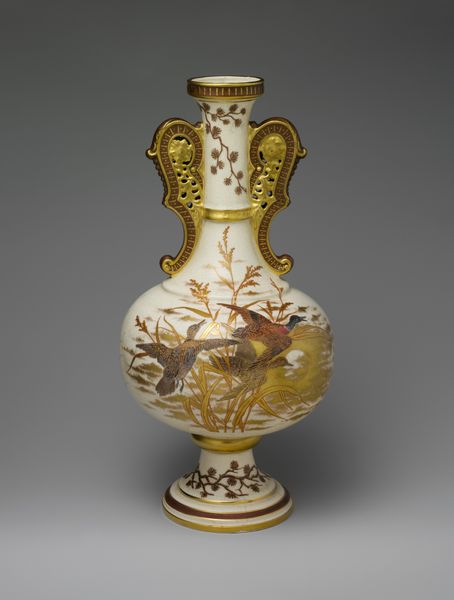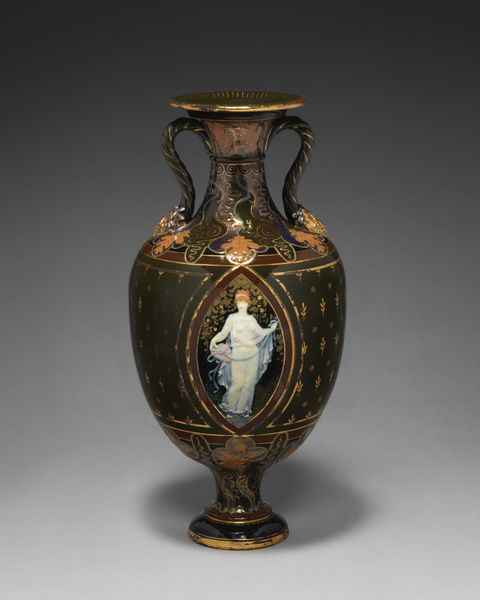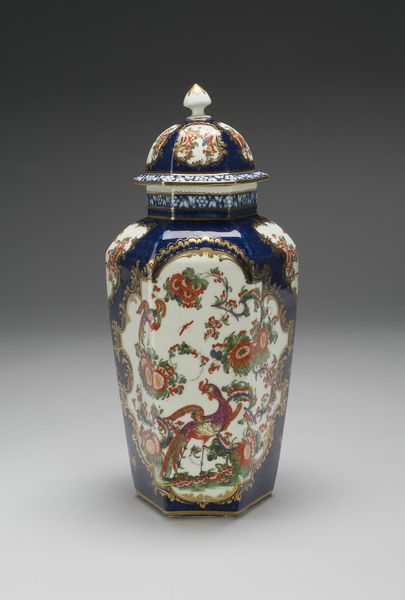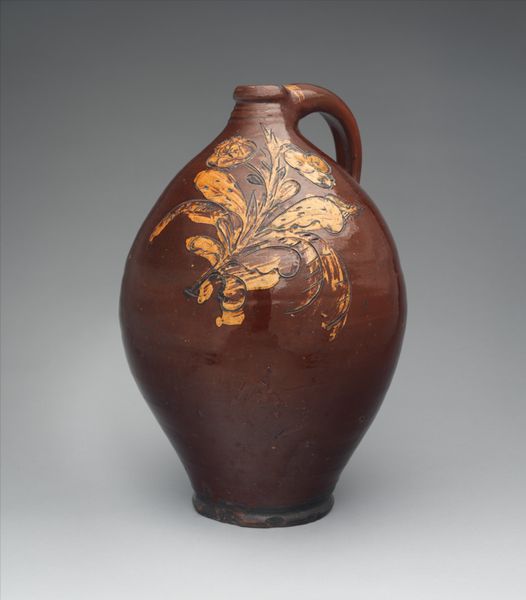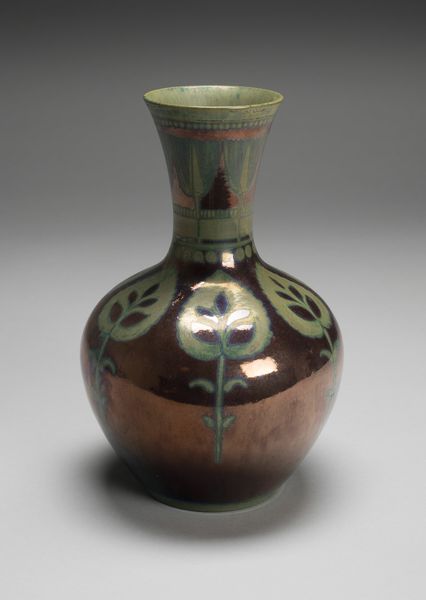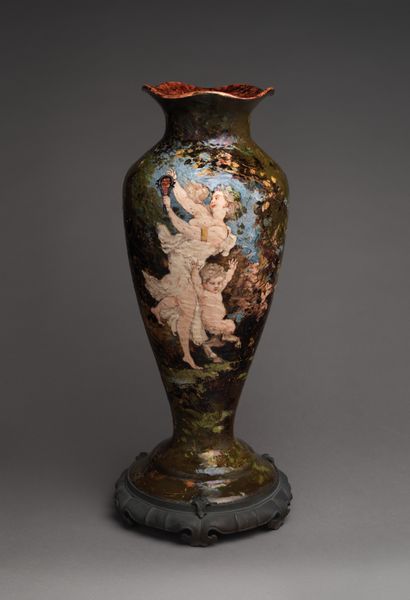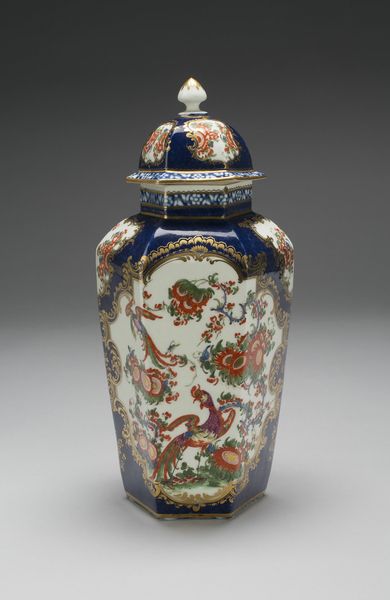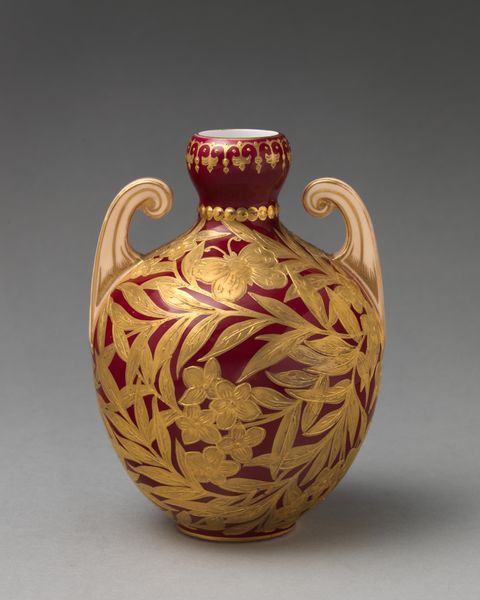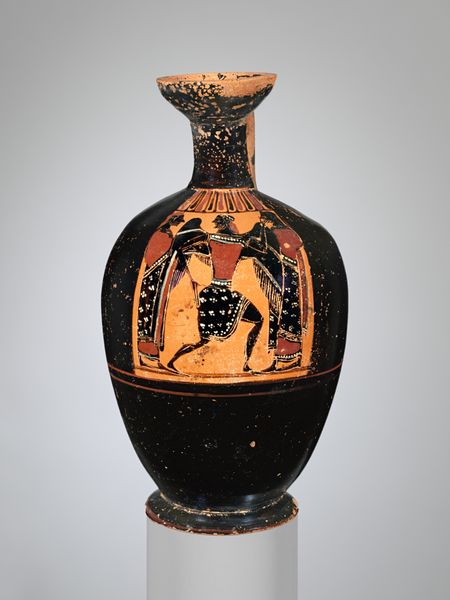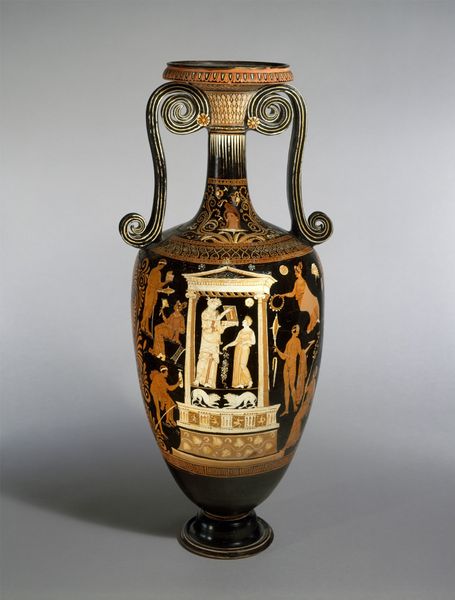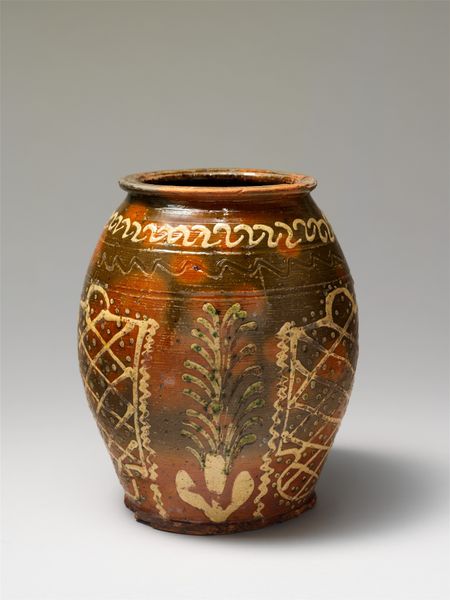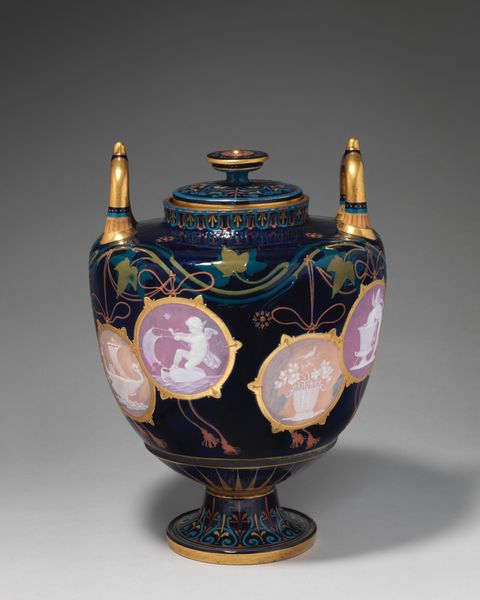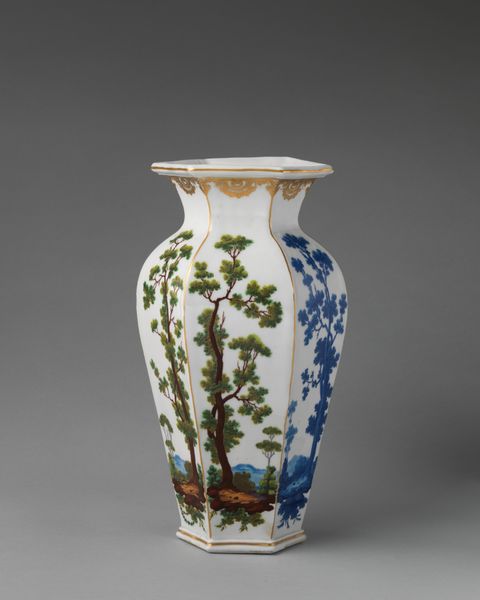
Dimensions: H. 19 inches (48.3 cm.)
Copyright: Public Domain
Editor: Right, let's discuss this ceramic stoneware vase crafted between 1882 and 1886 by Ernest Chaplet. The dark earthy colors with gold highlights and the floral and fauna motifs evoke a feeling of autumn to me, slightly melancholic. What story does this piece tell you? Curator: It's interesting you pick up on that feeling. Chaplet's work, including this vase, speaks volumes about the artistic dialogue between France and Japan during the late 19th century. There was a huge fascination with Japanese aesthetics, “Japonisme”, sweeping Europe. Consider how this vase challenges traditional Western ceramic practices, embracing instead the Wabi-sabi aesthetic. Editor: Wabi-sabi? Curator: Yes, it is a Japanese aesthetic that appreciates imperfection and transience. Observe the slight irregularities in the glazing and the asymmetrical arrangement of the decorative elements, rejecting the rigid symmetry often found in Western art. It reflects the philosophy of accepting the natural cycle of growth and decay. Editor: So, the vase isn’t just a pretty object. It's making a statement. It is using Asian artistic tradition as a counterpoint to more formalized European styles. Curator: Precisely! Museums at the time, and even today, played a crucial role in popularizing and, arguably, commodifying this “exotic” aesthetic. How do you feel that affects our reading of the work? Editor: It’s made me realize how tastes and our perception of art is so rooted in historical and social dynamics, especially through public exposure in institutions like the Met. The vase itself represents so much more than just decorative design. Curator: Agreed. Thinking about its place in shaping art historical movements is important, because, as you say, its social impact reaches beyond simple aesthetics.
Comments
No comments
Be the first to comment and join the conversation on the ultimate creative platform.
